Most seed Banks have a selection of feminized cannabis seeds and many of them can be grown outdoors unless the manufacturer indicates otherwise.
Feminized cannabis seeds allow you to guarantee female plants, which are the ones that produce buds and the most planted type of cannabis seed. On the other hand, regular seeds produce both male and female cannabis plants and growing them takes more work.
How to Choose Feminized Cannabis Seeds for Outdoors
Nowadays it’s possible to buy high quality feminized cannabis seeds that are easy to grow. These seeds can guarantee a decent harvest at affordable prices, considering the extra expenses involved in obtaining high quality cannabis in a dispensary or by other means.
There are certain factors you’ll need to keep in mind when it comes to choosing the right feminized seeds for outdoor growing.
Size of the Strain
Feminized cannabis strains grown outdoors can grow quite large and produce large yields when given enough time to grow and the proper care. Sativa-dominant strains tend to grow a lot bigger and taller than indica-dominant strains.
If you need a discreet strain for a small area such as a balcony, you’ll need to make sure the strain isn’t going to grow too big. If height and discretion aren’t an issue, you can always train, prune, plant later or plant autoflowering seeds. These last ones produce high yields and slightly less quality than feminized light-dependent strains.
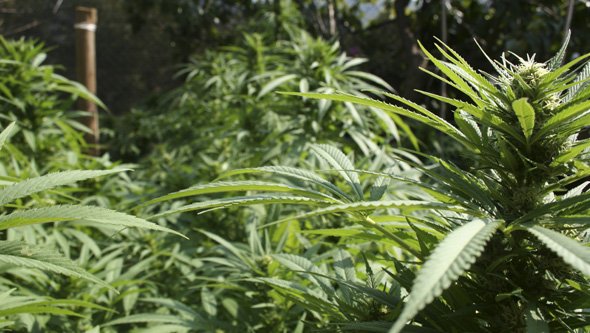
When to Harvest Outdoors
Cannabis plants outdoors must deal with insects, possible fungi and sometimes, bad weather. Therefore an early harvest is a great way to avoid these issues, as well as keeping insects and fungi from having enough time to do damage to your plants. Nowadays there are many different fast-flowering strains such as Critical King (hybrid) and Jamaican Dream (sativa), which have been extremely popular in outdoor grows all around the world.
Things to Keep in Mind When Choosing Feminized Seeds
As well as these factors, you can also choose your seeds depending on the type of effect that they produce (stimulating, relaxing, balanced), as well as different aromas and flavours and other factors such as genetics or cannabinoid proportion.
These last few factors are more personal; we recommend starting off with the size of your grow as a basis for your strain choice, making sure that you keep in mind harvesting times too. Later on, you can narrow it down to other characteristics.
How to Grow Feminized Cannabis Seeds Outoors
In the following section we’ll go over, stage by stage, how to grow feminized cannabis seeds outdoors.
General advice for growing feminized cannabis seeds
- Whenever you can use white flowerpots or smart pots; this allows for your plants’ roots to grow out more and cooler, while also feeding more.
- Excess heat can cause your plants to begin consuming nutrients stored in their leaves, causing nasty symptoms and colours.
- Protect your plants right from the start using natural preventive products such as neem oil, or using bio or chemical insecticides and fungicides if you already have an infestation.
- Make sure to keep in mind the seed bank’s recommendations in regard to when to harvest and the plants’ nutritional needs – make the most of your strain.
- Choose your flowerpot sizes based on the amount of space that you have; make sure not to place too many plants, they need enough space to grow out properly.
- Whenever you water, check and adjust the pH in your water as needed. Also, if possible, you should also check EC levels. If you need more information about watering your plants, you can check out our post how to water cannabis plants.
- If you use tap water or give your plants a lot of nutrients you should get used to using enzymes in order to get rid of unwanted salts and dead roots.
- When it comes to growing in flowerpots, use nutrients in liquid format – they are absorbed rapidly and allow for more control over dosages.
- On the other hand, if you’re growing out in the ground, you should used powdered fertilizers which cover more space and are slow-releasing.
Make sure to keep the flowerpots up off the ground to allow for more airflow and so that the heat from the ground doesn’t reach the roots. - During the summer, keep in mind that temperatures rise, and evaporation is faster when watering plants. The hotter it is, the more moisture evaporates; you’ll need to water more often, although if you keep fertilizing as usual you can easily cause overfertilization. We recommend using the same amount of nutrients as always, divided into more feedings, or using more enzymes.
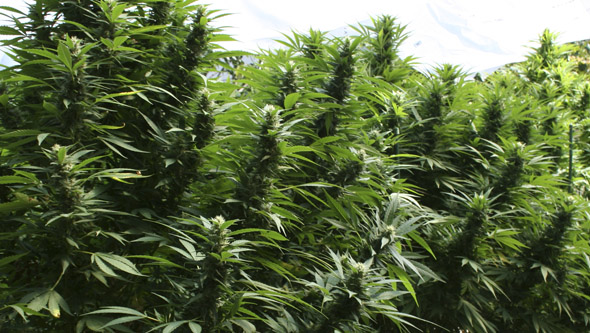
Germinating Seeds
Germination involves the seed changing from inactive, to a seedling. It can take just over 24h or even up to 7 days for seeds to germinate, depending on the strain, the germination conditions, how they’re stored and the state of the seeds.
In order to guarantee healthy germination and proper rooting before the growth stage, we recommend germinating your seeds separately and once they’ve become saplings, place them in their first flowerpot. If you need more information about germinating cannabis seeds, you can check out our post on how to germinate cannabis seeds.
Planting cannabis seeds after germination
Once your cannabis seeds have been germinated, you’ll need to plant them in their first flowerpot. Once your plant has around 1cm of roots, it can be planted – we recommend starting with a small pot, around 0.2 – 0.4L, with an airy, high-quality substrate. Before planting, moisten the substrate and make a small hole for placing the root.
During the first days, we recommend keeping plants in a propagator, inside with direct light, or in a growth grow tent indoors. We recommend keeping them protected until the first 4 leaves have developed and they can begin growing properly.
We also highly recommend using some sort of root stimulant such as Rootfast in order to increase root growth, as well as Trichoderma and mycorrhizae like Top Crop Micro Vita in order to protect and stimulate plant growth.
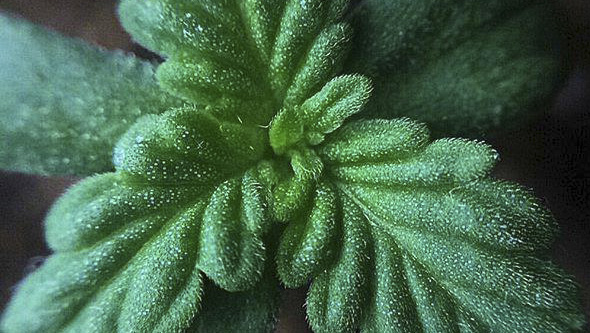
Transplanting
As your plants grow, their roots will begin taking over the substrate. There will come a point when your plants’ roots will end up filling up the substrate and growth will stop. Your plants might even end up with certain deficiencies when this happens as they won’t be able to find enough nutrients in the soil, and they’ll begin absorbing nutrients from their leaves.
In order to prevent this you’ll need to transplant periodically, moving your cannabis plants to larger flowerpots until right before the flowering stage. Every time you transplant, we recommend using a rooting stimulant, as well as mycorrhizae and Trichoderma as we mentioned earlier.
Keep in mind that the bigger the flowerpot, the larger the size of your plants and the larger the yield – so you’ll need to plan out your growing area accordingly. If you’re growing in the ground, we recommend transplanting from your flowerpot to the ground once they’re around 15 – 20cm tall; this allows it to grow more robust.
If you need more information on transplants, you can check out our post; when and how to transplant cannabis plants.
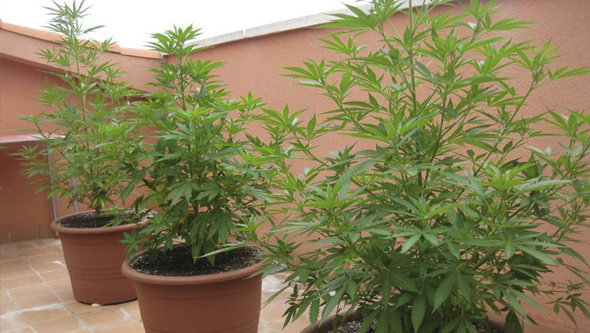
Growth/vegetative stage
Feminized light-dependent cannabis plants grow until adulthood (around 30 days). They’ll keep growing as long as they don’t get less hours of light. If you grow outside of the right season, your plants will grow for around a month and then they’ll start their flowering stage.
This is why we recommend growing feminized cannabis seeds towards the start of the season; if you want, you can also harvest again towards mid-summer. We recommend planting feminized seeds over autoflowering seeds, as they offer larger yields and quality.
First Growth Stage
- During the first few growth weeks, when your plants have small roots, they’ll need small amounts of nutrients.
- If your plants’ substrate has been fertilized already, during the first few weeks you should only use root stimulant, as well as other additives such as Alg a Mic or Liquid Karma.
- When using substrate that is slightly fertilized, you can start using 1/3rd of the minimum amount of nutrients indicated by manufacturers, including root stimulants and other nutrients.
- If you grow outdoors, we recommend using powdered nutrients like Nitroguano.
Second Growth Stage
As your plants grow in size their root system also grows, and so does their need for nutrients. When your plants have 4 pairs of leaves you can begin to slowly increase the amount of nutrients you give them. This should be done week by week, starting wioth the minimum reaching the maximum indicated by the manufacturer. Remember to only increase dosage when your plants respond properly to fertlziers and don’t show any signs of overfertilization.
Growth fertilizer should contain basic nutrients such as nitrogen, phosphorus, potassium and NPK, as well as micronutrients which can be found in lesser amounts, but are still important.
Flowering Stage
During the flowering stage you’ll need a complete fertilizer designed for flowering which contains nitrogen (less than the growth fertilizer), posphorus and potassium (more than the growth fertilizer), as well as other necessary micro-nutrients for this stage.
You can also increase bud yield using flowering stimulants such as Delta 9 and increase the quality of your cannabis using various additives such as Bud Candy, which contains mainly carbohydrates and natural sugars, as well as fatteners and bud fatteners which contain mainly phosphorus and potassium, such as the famous PK 13 14.
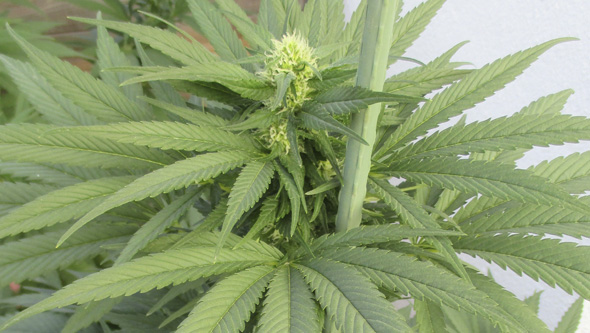
First Flowering Stage
- The first two flowering weeks, your plants will keep growing, so you’ll need to keep giving them growth fertilizer.
- Starting at the second flowering week, your plants will start forming small groups of pistils (white hairs) all over. This is when you’ll need to start using flowering fertilizer.
- In order to improve growth and bud quality we recommend using flowering stimulants such as Big One by Top Crop or a metabolism stimulant such as Liquid Karma by Botanicare from the start of the flowering period onwards.
- If you plan on growing outdoors, we recommend using powdered flowering fertilizers such as Superguano.
Second Flowering Stage
- The second flowering stage happens between the 3rd and 4th flowering weeks (depending on the flowering time of the strain) and until the plants are mature (around 10 days before harvesting).
- During this stage, as well as slowly increasing the frequency and dosage of flowering and flowering stimulant. You can use but fatteners like PK products (phosphorus and potassium) such as Bio Bloombastic in order to increase the size and weight of your buds.
- You can also use other additives or additional products such as Top Candy in order for your plants to reach their maximum potential.
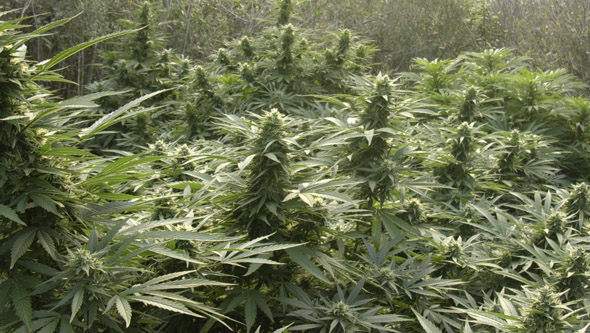
Root Flushing
Once cannabis plants begin to mature fully, they’ll need a little rest from intense temperatures and light. These conditions tend to occur naturally outdoors once it becomes harvesting time.
As well as these two conditions, your plants have to metabolize the nutrients that they contain. You can help them along with a root flushing by using just water over the last 10 – 15 days. This stops the plant from absorbing nutrients from their soil, taking them from their leaves instead, losing their green colour.
In order to make this easier you can use cleaners such as Canna Flush, which can help to get rid of and drain any leftover nutrients or salts in soil and roots. If you don’t want to use a cleaner, you’ll need to use enough water for three times the amount of the flowerpot so that it drains properly. Outdoors with very large flowerpots you might need to use a cleaner to make it a bit easier.
Harvesting
The best way to know when to harvest is to keep a very close eye on your plants using a magnifying glass or microscope to check the state of their trichomes. If you want more information regarding when to harvest your plants, check out our post about when to harvest cannabis plants.
Cannabis plants in outdoor grows can get quite big, so trimming them can often be quite a nightmare. We recommend using bud trimmers to speed up the process.
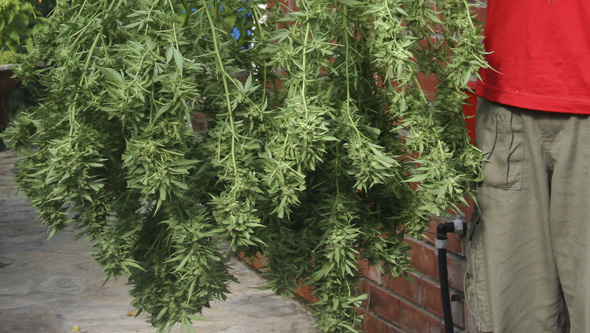
During this last phase, you’ll need to pay attention to the weather; rainy days right before harvesting can cause different types of fungi to appear and can cause issues when drying the plant.
Once your plants are dry, you’ll need to move on to curing and storing the flowers. If you want more information, check out our post on how to dry, cure and store your buds.
Insects and Fungi when Growing
The fight against insects and fungi needs to be two-staged if you want to be successful and keep your plants free. It’s always best to prevent any possible issues rather than waiting for the insect or fungi to already infect your plants. Keep in mind that during the advanced flowering stages you can only use bio insecticides and fungicides.
If you’re going to start growing feminized cannabis seeds outdoors, we recommend using biological insecticides rather than chemical products as much as you possibly can. Natural products leave less residue on plants and are less harmful to the environment.
Infestation Prevention
Insect and fungi preventive products should always be used before the infestation appears; this will allow you to stop any sort of insect or fungi from latching onto your plant. Most preventive products act via contact with the insect, although not as efficiently as products used to eradicate them. Some of the most common pest preventive products contain neem oil, which is available in its liquid format, Bio Neem.
Among insecticide and fungicide preventives, some of the most used ones contain Trichoderma and mycorrhizae which you’ll need to use at the start of the grow and after every transplant. You should also use preventives such as Oidium as well as OidiumProt (which also acts via contact), and/or root protectors such as Mineral Magic.
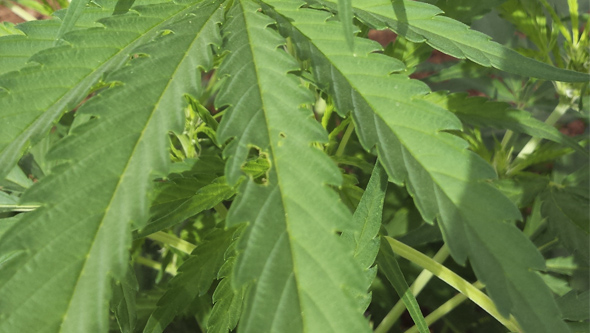
You can also prevent using chemical insecticides such as Skunk by Probelte (a strong acaricide) or Lexor (potent fungicide).
Contact Insecticides Against Fungi and Insects
If you’ve already found symptoms of insects or fungi in your cannabis plants, it’s time to fight them off using the necessary insecticides or fungicides depending on the case. As we have explained earlier, it’s much better to prevent than to have to combat fungi and insects – luckily there are many different products designed to stop these types of pathogens.
The first time you start to see these signs or notice that your plants having issues, you’ll need to make sure to stop it as soon as possible. If it happens during the growth stage you can use bio and chemical insecticides, although during the flowering stage you can only use bio insecticides.
Some of the most common and effective products include Spruzit, which is ideal for fighting a wide variety of insects in any growth or flowering stage. Before they’re ready to harvest, if they’re excessive rain you may have issues with botrytis that you can solve using Botryprot.
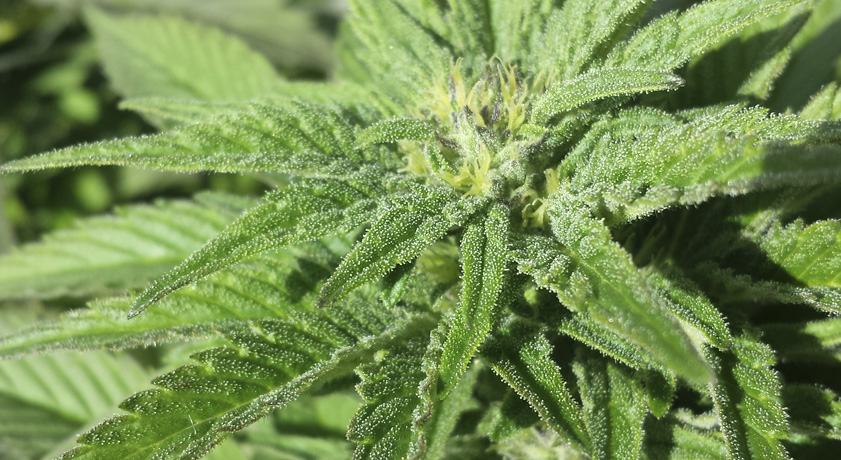
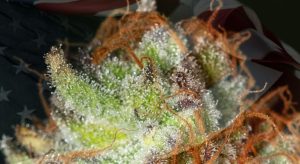
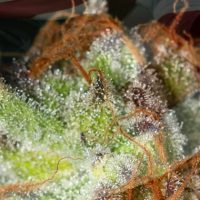
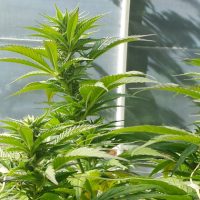
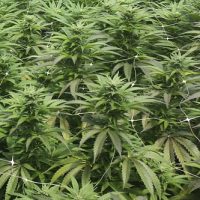
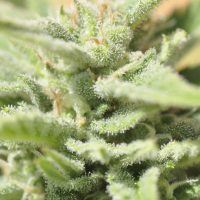

6 Responses
I’m trying to add density to my buds this years grow ? I’m lo stress training , I’m I missing something ?
Hello,
There are various techniques to increase flower weight, but we always recommend maintaining a balance in plant care. If the plant reaches the flowering phase without stress and in good health, the use of supplements such as PK in the advanced flowering stage, along with carbohydrates, can promote flower density. Regarding pruning, with photoperiod plants, there shouldn’t be an issue during the growth phase, but caution is needed during flowering.
For autoflowers, it is not advisable to perform aggressive pruning as stress could trigger premature flowering.
Regards,
I researched the soil organic that growers use, worm,bat bloodmeal, ptasium water from bananas. , chicken manure ,alfalfa, is my soil growing autos fine like it is? I also dress with my good compost ,ocasionaly, when flower I add molasses. And tiger. Bloom
Is this good enough?
Hello,
The idea of creating a super soil involves providing the plant with the majority of nutrients from the beginning, allowing bacterial and fungal action to fix them in the soil for gradual assimilation. However, caution is necessary, as an excess of some nutrients can lead to deficiencies in others. Compost alone, along with humus, might be sufficient for autos, but it depends on the specific conditions of each plant.
For fast-cycle plants, I would recommend a moderately/low-fertilized soil and the addition of liquid fertilizers as the plant needs them, whether organic or mineral based on your preferences. It is also advisable to use compost teas for this type of cultivation.
Regards,
I would a recommended nutrient that would enable the bud to smell fruity, bubble gum flavored when dried and ready to smoke.
Hello,
There are no products that modify the flavor of cannabis, what we can use is different fertilizers along with additives such as carbohydrates and stimulants to enhance its terpene profile,
I advise you to look for a variety with that terpene profile as they could be:
https://www.lahuertagrowshop.com/en/cannabis-seeds/?q=Flavour-Chewing+gum+flavor
Reegards,